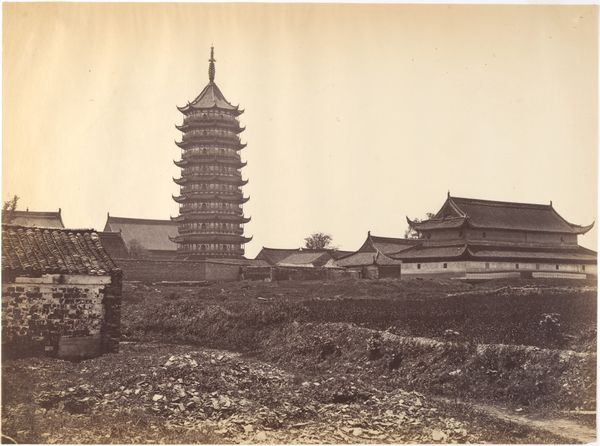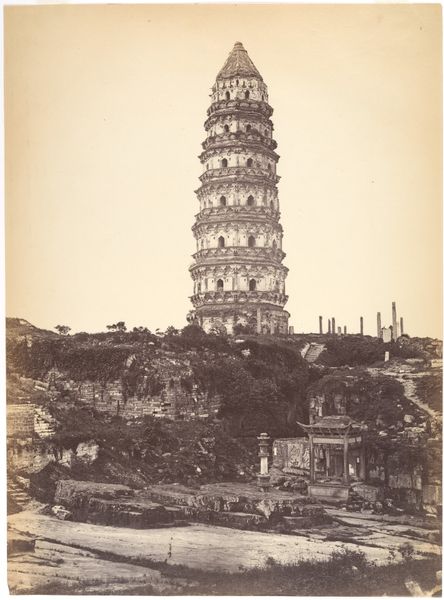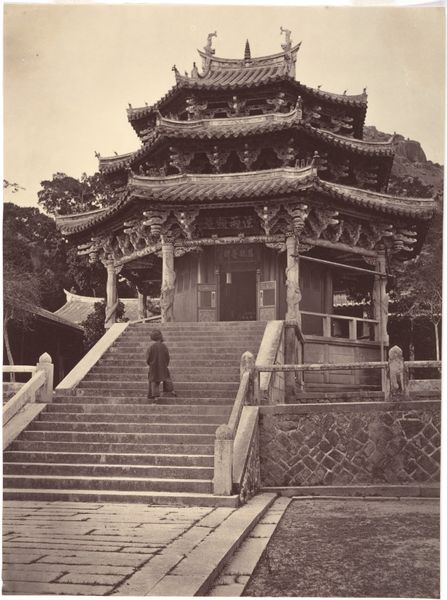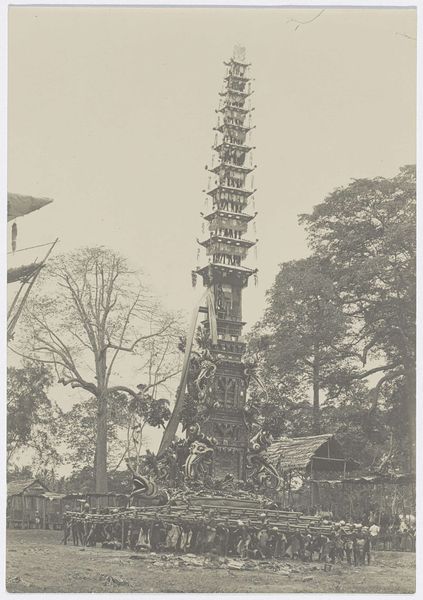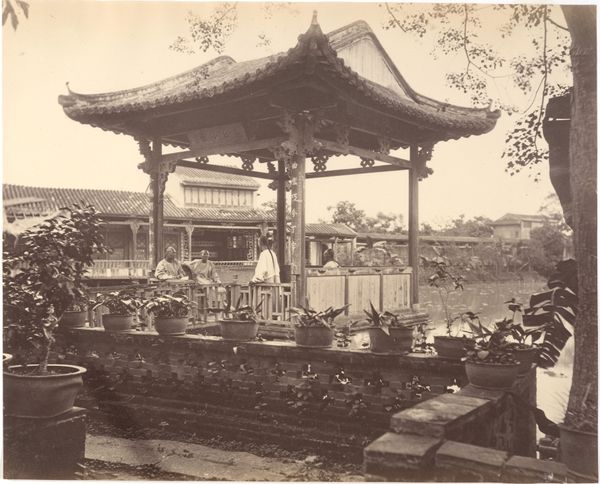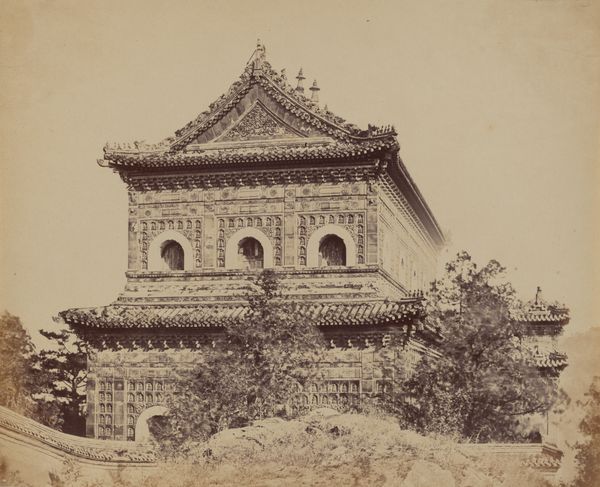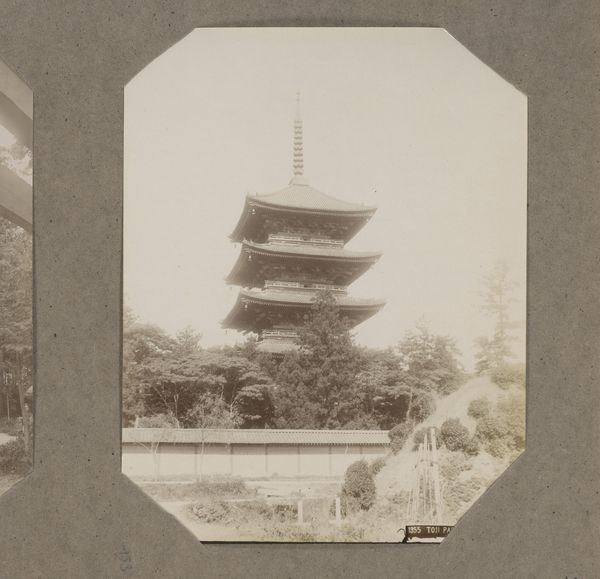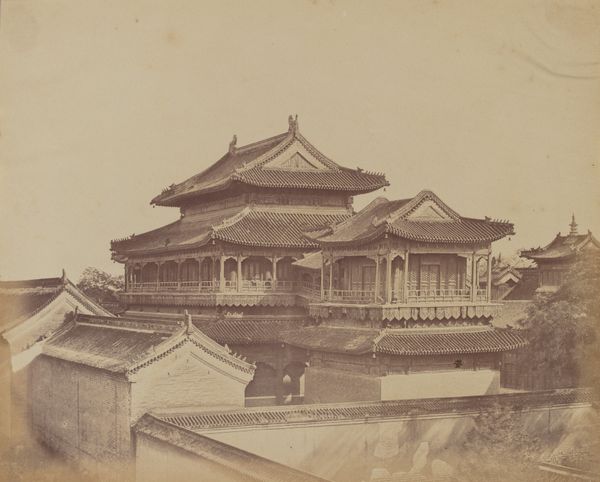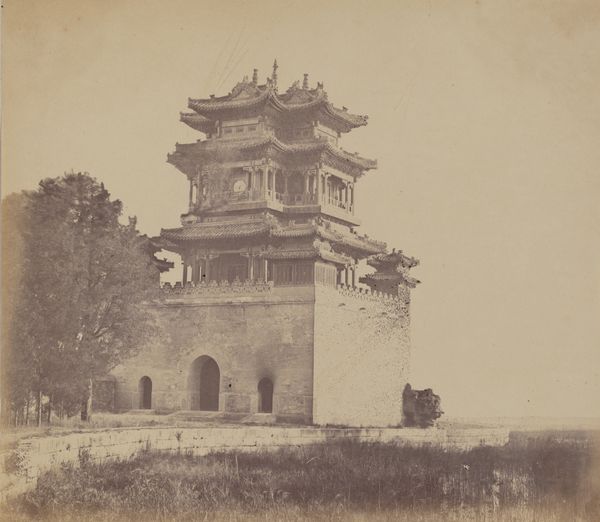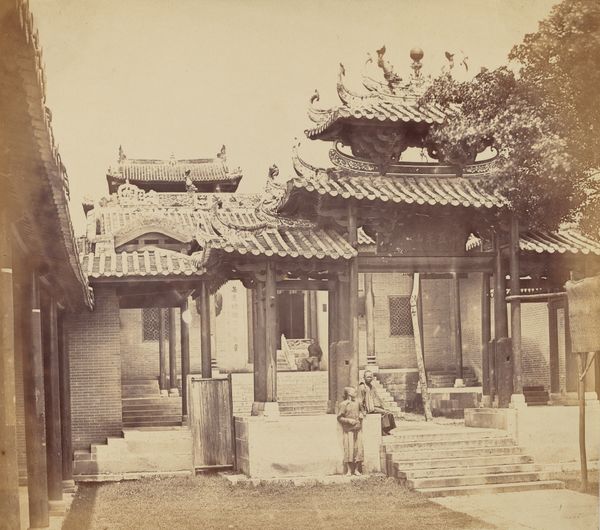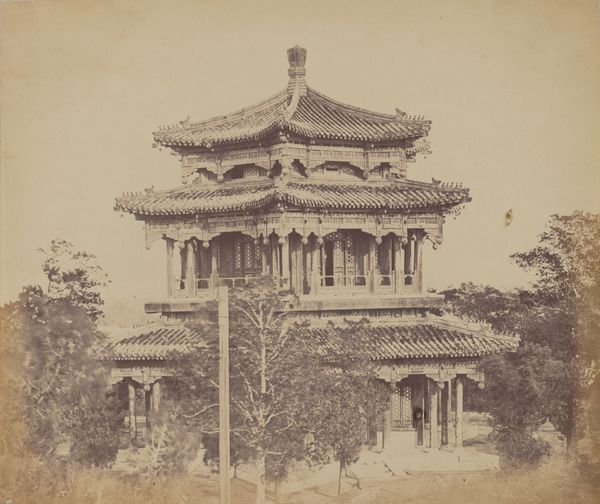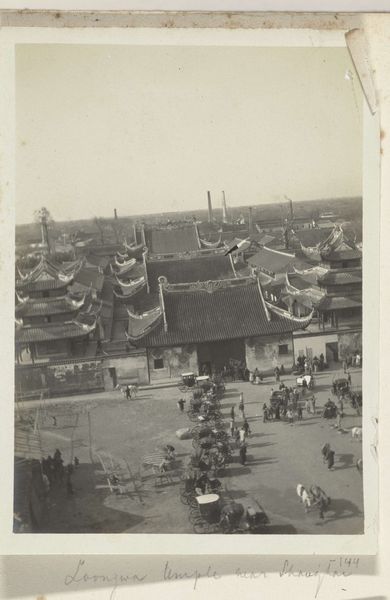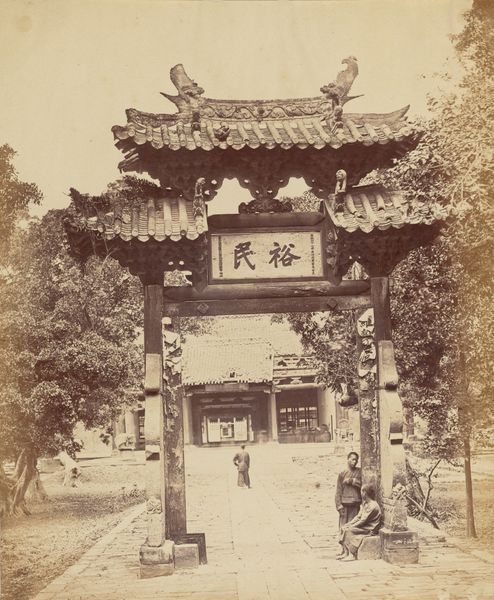
photography, architecture
#
asian-art
#
landscape
#
outdoor photography
#
photography
#
architecture
Dimensions: Image: 13 1/16 × 9 3/4 in. (33.2 × 24.8 cm)
Copyright: Public Domain
Editor: This is "Twin Pagodas at Foochow," a photograph taken by John Thomson in 1869. I'm struck by how these structures seem to simultaneously stand tall and fade into the landscape with that monochrome palette. What do you see in this piece? Curator: What strikes me are those pagodas themselves. Think about what a pagoda *represents* in Chinese culture – the layers, almost like stacked memories or levels of understanding. Each tier could symbolize different virtues, prayers, or even represent a path towards enlightenment. The twin nature speaks to balance, doesn’t it? Editor: Absolutely! Like mirroring, echoing each other. It brings in ideas about harmony. Curator: Exactly. Consider, too, that Thomson was documenting a China largely unknown to the West. These pagodas, far from being mere buildings, become potent symbols of an ancient culture, of resilience and spiritual depth captured in a moment. Does it shift your perception knowing it’s seen through a Western lens? Editor: It does! I guess I hadn't fully considered Thomson's role as a kind of translator of culture, focusing on symbolism for an audience back home. Curator: The photograph becomes a carrier – a vessel for these layered meanings and histories. And our understanding of it keeps evolving. What did you discover from our short discussion? Editor: I definitely see how images contain deeper cultural codes; it's made me more sensitive to the artist's choices of subject matter. Thank you! Curator: My pleasure. Understanding that continuity is key, and this photograph freezes a specific instance, enabling the transmission of those complex cultural symbols across space and time.
Comments
No comments
Be the first to comment and join the conversation on the ultimate creative platform.
